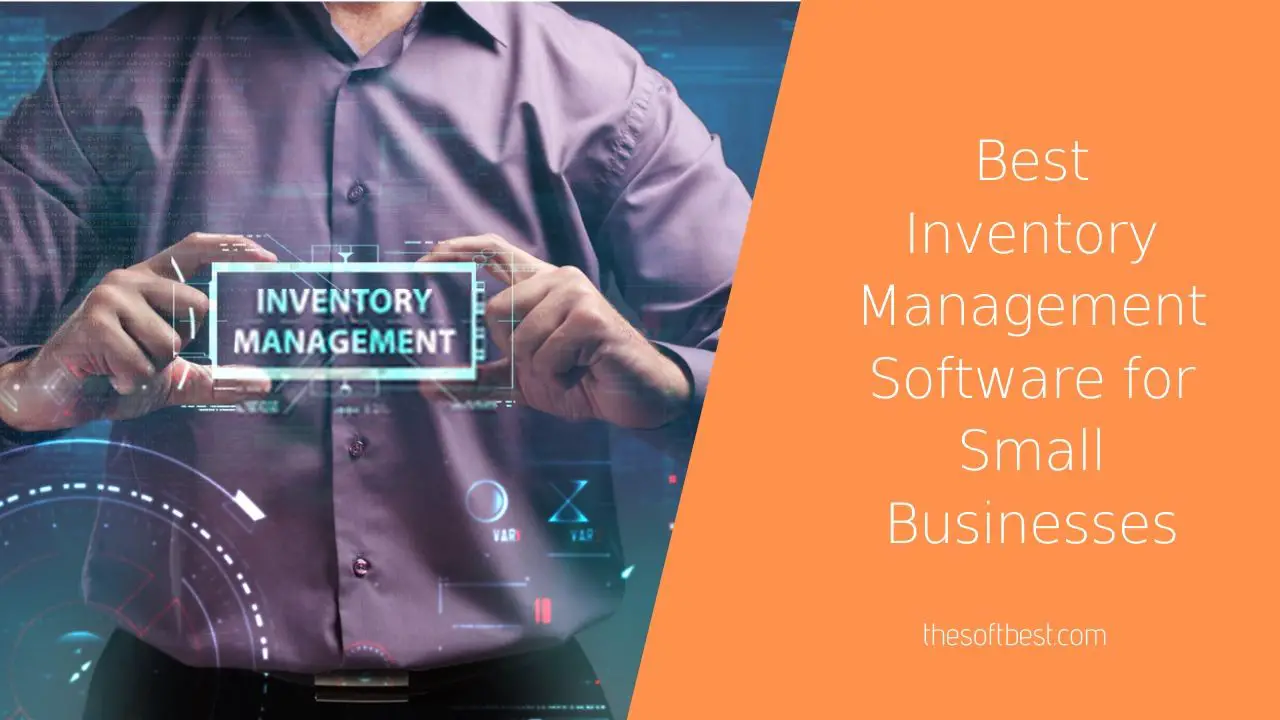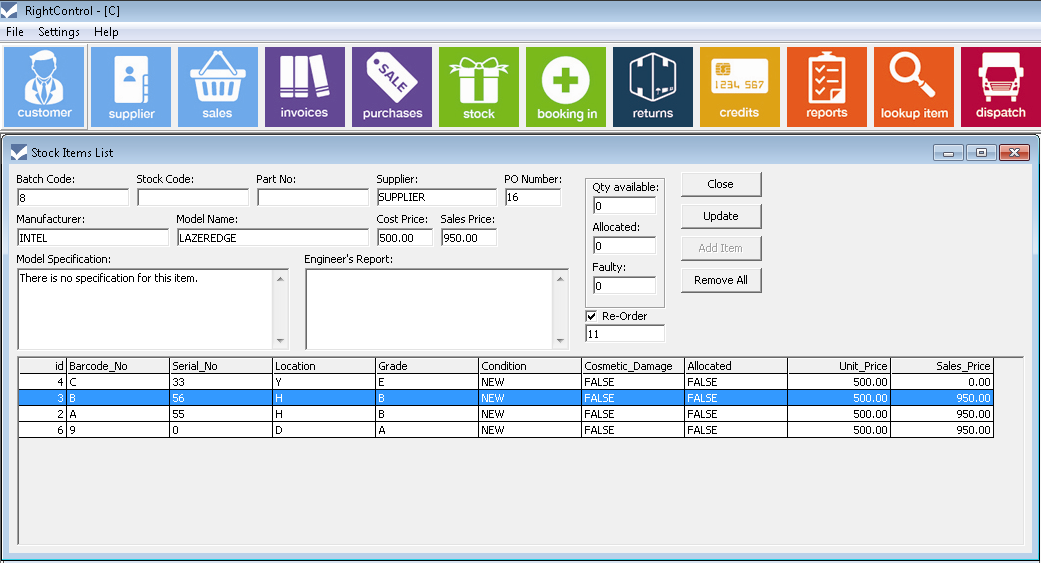Accounting and inventory management software for small businesses is a powerful tool that can streamline operations, improve efficiency, and boost profitability. By automating key tasks and providing real-time data, this software can help small businesses stay organized, make informed decisions, and grow their business.
From tracking inventory levels to generating financial reports, accounting and inventory management software can provide a comprehensive solution for small businesses looking to optimize their operations.
Introduction: Accounting And Inventory Management Software For Small Business
Efficient accounting and inventory management are crucial for small businesses to thrive in today’s competitive market. They provide a solid foundation for informed decision-making, financial stability, and operational efficiency.
According to a study by the Small Business Administration (SBA), businesses that implement effective accounting practices experience a 15% increase in profitability. Moreover, a well-managed inventory system can reduce carrying costs by up to 20% and improve customer satisfaction by ensuring timely order fulfillment.
Benefits of Efficient Accounting
- Accurate financial reporting for tax compliance and investor confidence.
- Control over cash flow, expenses, and profitability.
- Detection and prevention of fraud and errors.
- Improved decision-making based on real-time financial data.
Importance of Inventory Management
- Ensures availability of products to meet customer demand.
- Minimizes waste and spoilage, reducing costs.
- Optimizes storage space and reduces inventory carrying costs.
- Improves customer satisfaction by preventing stockouts and backorders.
Key Features of Accounting and Inventory Management Software
Small businesses need accounting and inventory management software that can help them streamline their operations and make better decisions. When choosing a software solution, it is important to consider the following key features:
- Accounting features: These features help businesses track their income and expenses, manage their accounts receivable and payable, and prepare financial reports.
- Inventory management features: These features help businesses track their inventory levels, manage their orders, and optimize their supply chain.
- Integration with other software: The software should be able to integrate with other business software, such as CRM and ERP systems.
- Ease of use: The software should be easy to use for both accounting and non-accounting staff.
- Affordability: The software should be affordable for small businesses.
The following table provides a more detailed overview of the key features of accounting and inventory management software:
| Feature | Description | Importance |
|---|---|---|
| General ledger | Tracks all of a business’s financial transactions | Essential for accurate financial reporting |
| Accounts receivable | Tracks money owed to a business by its customers | Helps businesses manage their cash flow |
| Accounts payable | Tracks money owed by a business to its suppliers | Helps businesses avoid late payment penalties |
| Inventory management | Tracks a business’s inventory levels | Helps businesses avoid stockouts and overstocking |
| Order management | Tracks a business’s orders | Helps businesses fulfill orders quickly and efficiently |
| Integration with other software | Allows the software to share data with other business software | Improves efficiency and reduces errors |
| Ease of use | Makes the software easy to use for both accounting and non-accounting staff | Reduces training time and costs |
| Affordability | Makes the software affordable for small businesses | Helps businesses save money |
Benefits of Using Accounting and Inventory Management Software
Accounting and inventory management software can provide numerous benefits for small businesses, streamlining operations, improving accuracy, and enhancing decision-making.
Improved Accuracy
- Automates calculations, reducing errors caused by manual data entry.
- Provides real-time updates, ensuring accurate financial and inventory records.
Increased Efficiency, Accounting and inventory management software for small business
- Automates tasks, such as invoicing, purchase orders, and stock tracking, freeing up time for other activities.
- Improves communication between departments, eliminating duplicate data entry and errors.
Enhanced Decision-Making
- Provides real-time financial and inventory data, enabling informed decision-making.
- Generates reports and insights that help identify trends and opportunities.
Choosing the Right Software for Your Business
Selecting the ideal accounting and inventory management software for your small business is crucial for streamlining operations and making informed decisions. Here’s a comprehensive guide to help you navigate the process:
Evaluate Software Options
Begin by assessing your business’s specific needs. Consider the size, industry, and accounting requirements. Research various software options and compare their key features, pricing, and customer reviews.
| Software Name | Key Features | Pricing | Customer Reviews |
|---|---|---|---|
| QuickBooks Online | Cloud-based, user-friendly interface, comprehensive features | Starting at $25/month | 4.5/5 stars on Trustpilot |
| FreshBooks | Simple and intuitive, suitable for freelancers and small businesses | Starting at $15/month | 4.2/5 stars on Capterra |
| Zoho Books | Feature-rich, customizable, integrates with other Zoho apps | Starting at $19/month | 4.4/5 stars on G2 |
Tips for Choosing the Best Fit
Consider the following tips when selecting software:
- Read reviews and testimonials: Gain insights from other businesses that have used the software.
- Check for integrations: Ensure the software integrates with other essential tools, such as CRM or payment gateways.
- Request a demo or free trial: Experience the software firsthand before committing.
- Consider scalability: Choose software that can grow with your business.
- Look for support options: Ensure the software provider offers reliable customer support.
Implementing and Using the Software

Implementing and using accounting and inventory management software involves several key steps to ensure a successful and efficient transition. By following these steps and incorporating best practices, small businesses can maximize the benefits of the software and streamline their operations.
Steps for Implementation
- Plan and Prepare: Determine your business requirements, set clear goals, and establish a project timeline.
- Select the Right Software: Choose software that aligns with your business needs, budget, and scalability requirements.
- Data Migration: Import existing data into the software, ensuring accuracy and completeness.
- Configure and Customize: Set up the software according to your specific business processes and preferences.
- Train Staff: Provide comprehensive training to ensure staff proficiency and adoption of the software.
- Go Live: Launch the software and monitor its performance closely, making adjustments as needed.
Best Practices
- Involve Key Stakeholders: Engage decision-makers and staff throughout the implementation process.
- Test Thoroughly: Conduct rigorous testing to identify and resolve any issues before going live.
- Seek Professional Assistance: Consider consulting with experts for guidance and support during implementation.
- Monitor and Evaluate: Regularly track the software’s performance and make adjustments to optimize its effectiveness.
- Stay Up-to-Date: Ensure the software is updated with the latest features and security patches.
Case Studies and Success Stories
Accounting and inventory management software can bring significant benefits to small businesses. Here are a few case studies and success stories that demonstrate the positive impact this technology can have:
Example 1: Retail Store
- A small retail store implemented an accounting and inventory management system to streamline its operations.
- The software helped the store track inventory levels in real-time, reducing overstocking and out-of-stock situations.
- The store also experienced improved cash flow management due to accurate and up-to-date financial reporting.
Example 2: Manufacturing Company
- A manufacturing company used accounting and inventory management software to automate its production processes.
- The software helped the company track raw materials, work-in-progress, and finished goods, leading to increased efficiency and reduced waste.
- The company also gained better control over its production costs and improved its profit margins.
7. Trends and Future Developments

The accounting and inventory management software industry is constantly evolving, with new trends and developments emerging all the time. These advancements are driven by the need for businesses to improve efficiency, accuracy, and compliance. Small businesses can benefit greatly from these innovations, as they can help them compete with larger enterprises.
One of the most significant trends in accounting and inventory management software is the adoption of cloud-based solutions. Cloud-based software is hosted on remote servers, which means that businesses can access it from anywhere with an internet connection. This eliminates the need for businesses to install and maintain software on their own computers, which can save time and money.
Another trend is the increasing use of artificial intelligence (AI) in accounting and inventory management software. AI can be used to automate tasks such as data entry, invoice processing, and fraud detection. This can free up valuable time for business owners and accountants, allowing them to focus on more strategic tasks.
Potential Advancements or Innovations
- Real-time data: Accounting and inventory management software will increasingly provide real-time data to businesses. This will allow businesses to make more informed decisions, as they will have access to up-to-date information about their financial performance and inventory levels.
- Predictive analytics: Accounting and inventory management software will use predictive analytics to help businesses identify trends and forecast future performance. This will allow businesses to make better decisions about their operations and investments.
- Blockchain technology: Blockchain technology has the potential to revolutionize accounting and inventory management. Blockchain is a secure, distributed ledger system that can be used to track transactions and assets. This could improve transparency and accountability in the accounting and inventory management process.
Ultimate Conclusion

In conclusion, accounting and inventory management software is an essential investment for small businesses looking to streamline their operations, improve efficiency, and make informed decisions. By implementing the right software, small businesses can gain a competitive edge and position themselves for success in today’s competitive market.
Query Resolution
What are the benefits of using accounting and inventory management software?
Accounting and inventory management software offers numerous benefits for small businesses, including improved accuracy, increased efficiency, enhanced decision-making, reduced costs, and improved customer satisfaction.
How do I choose the right accounting and inventory management software for my business?
When choosing accounting and inventory management software, consider your business’s specific needs, budget, and the features offered by different software providers. It’s also important to read reviews and compare pricing before making a decision.
How do I implement accounting and inventory management software?
Implementing accounting and inventory management software typically involves gathering data, setting up the software, training staff, and integrating the software with other business systems. It’s important to follow the software provider’s instructions and best practices to ensure a successful implementation.